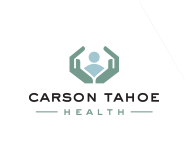
In this day an age of food abundance and cheap junk food, many of us have forgotten how to eat, and as a result, our children are learning bad habits that lead to obesity. As our kids grow, we need to help them develop active lives and healthy eating habits that will last a lifetime. Here are a few tips to keep our kids eating like they should.
Breakfast is food for a starving brain. Even as your children are not hungry in the morning, their brains are! Breakfast is a very important meal because it helps children stay focused at school. Even a rushed morning should include breakfast—try a low-fat yogurt or banana on the go. Fruit, whole grain cereal and milk, 4 oz of calcium fortified orange juice, or hot cereal are all part of a good breakfast. When you eat breakfast, you are more likely to make healthy food choices later in the day.
Many parents ask how much children should eat at a meal. Children need smaller portions than adults because their stomachs are about the size of a fist. Depending on age, young children need ¼ – ½ of an adult serving. As a general meal guideline, young kids need about one tablespoon of each kind of food for each year of their age. For example, a three-year-old should be offered three table spoons of applesauce to start. Offer more, if still hungry, but don’t force your child to clean the plate. Try to serve meals at the same time everyday and to eat at the table.
Children need three meals a day and one “mini-meal” after school. Younger children should eat four to five times a day. Choose meals that include foods from these groups, rather than solely carbohydrates—for example, cheese and crackers, yogurt and fruit, peanut butter on apple or celery, animal crackers and milk. Snacks should total about 100-200 calories. Adults and kids alike should eat 5-9 servings a day of fruit and vegetables –one medium size piece of fruit or ½ a cup of cooked/canned vegetables is one serving. Include them in snacks! Limit junk food and fast food and don’t skip meals.
A wise person (and the American Academy of Pediatricians) once explained healthy living as, “Eat Less, Move More.” Children need to “move” for 30-60 minutes per day. Go for a brisk walk with the family, play outside, walk to school, dance around the living room. Limit time in front of screens, including TV, computer and video games to two hours per day.
Many Americans rely on juice and soda as a main source of hydration. The best drink to hydrate with after sports and during the day is good old fashioned water. Juice and soda add unwanted calories during the day. These beverages contain a lot of sugar (even natural fruit juice contains fructose- a sugar). The total calories in two juices or sodas per day can add up to an additional pound of body weight in just 10 days. Limit juice intake to four ounces per day and sodas should be reserved for special occasions.
With these healthy tips, we should be able to help our kids make wise choices and lead healthier lives.
Also school yards can be a cesspool of germs and children are often the conduits of bringing illnesses to the rest of the family. Remind your children to consistently hand wash. Singing the Happy Birthday song three times in their head is a good measure for how long to scrub with soap. Getting a flu shot is also very important for protecting your child and entire family. Look for updates in October. As with all health questions, please talk to your pediatrician about your child’s health and diet. For further information on health and eating consider these websites: www.aap.org and www.eatright.org, www.mypyramid.gov. If you have any questions or “back to school” health tips of your own, please share them in the following comments box.







